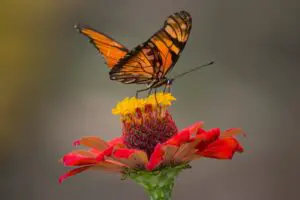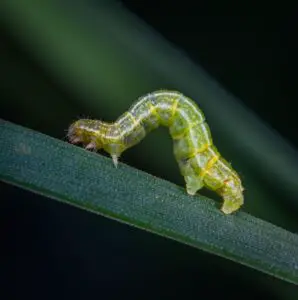The butterfly life cycle is a fascinating process that has captivated people for centuries. The butterfly is one of nature’s most interesting and beautiful creatures. To many people, the butterfly symbolizes transformation and represents hope for the future. But how does a butterfly go from caterpillar to captivating insect? The answer lies in the fascinating life cycle of the butterfly.
Butterflies are a diverse insect species with approximately 15,000 different kinds in existence. They can be found on every continent except Antarctica and range from small to large in size.
What is the Butterfly Life Cycle?

The butterfly life cycle is an amazing and complex process. The transformation of a caterpillar into a beautiful winged adult is both fascinating and incredible. Each stage in the lifecycle serves an important purpose, helping butterflies to thrive in their environment.
An adult female will lay eggs on leaves or stems of plants that her larvae will later feed on. After hatching, the larvae (caterpillars) spend most of their time eating and growing larger in size until they eventually form a pupa (chrysalis). This stage typically lasts between two weeks to several months depending on species.
Finally, when it emerges as an adult, it can be identified by its unique color patterns and markings which vary greatly depending on the species. Butterflies live anywhere from 1 week up to a year before they die and start this cycle all over again!
1.Egg: The Starting Point
When discussing butterfly life cycles, the egg is the first point in a butterfly’s life. Butterflies lay their eggs on specific plants so that they will be able to feed upon them once they hatch. Depending on the species, it may take from three days up to two weeks for a butterfly’s egg to hatch into a larva or caterpillar. During this time, the egg must remain in ideal conditions for proper development and survival.
Once hatched, these tiny caterpillars have big appetites and will spend most of their time munching away at leaves and other plant matter until they are ready to enter the pupal stage or chrysalis. This process can take anywhere from two weeks up to several months depending on environmental factors such as temperature and humidity levels.
2.Larva: Caterpillar Stage

Butterflies have four distinct stages in their life cycle, and the larva stage is one of the most important. Also known as caterpillars, this stage is characterized by a rapid growth period that ultimately leads to metamorphosis into an adult butterfly.
The larva stage begins when the butterfly egg hatches and a tiny larvae emerges with six legs and small antennae. This initial stage is also referred to as instar one because it marks the beginning of several more growth stages (instar two, three etc.).
During this time, caterpillars go through molting cycles which are necessary for them to grow properly. As a result of these molts, their exoskeletons become larger and more complex until they reach instar five or six. At this point, the caterpillar stops molting and begins to look for a place to form a cocoon.
3.Pupa:Chrysalis Stage

The pupa chrysalis stage of the butterfly life cycle is one of the most interesting and visually stunning phases in a butterfly’s transformation. This is when it changes from a caterpillar to an adult, with dramatic changes in form, color and size. The pupa encases itself in a protective shell known as the chrysalis until it breaks free from its casing as an adult butterfly.
During this phase, several physical transformations occur within the pupa’s body. Its wings develop and its antennae grow longer, all while shedding its exoskeleton multiple times to make way for new growth. The digestive tract also grows larger and more muscular so that the newly formed butterfly can feed on nectar after emerging from its chrysalis.
Finally, hormones are released that help shape the structure of its wings so they can mature into full-sized flight organs by adulthood.
4.Adult: Fully Grown Butterfly
The butterfly life cycle is a fascinating metamorphosis that begins with the egg and ends with an adult butterfly. The adult stage of a butterfly is when it reaches full size and can accordingly fly, feed, and reproduce. As adults, butterflies are able to migrate to different climates in order to find resources for food or mates.
During their lifespan as adults, butterflies typically have very short time frames in which they can complete all their tasks: flying in search of food or mates, reproducing, laying eggs and then eventually dying. Butterflies also need enough energy during this period so they can undertake these activities successfully; therefore they often rely on flowers for nectar as well as other sources of nutrients like tree sap or decaying fruit.
Migration & Reproduction
Migration and reproduction are two of the most important parts of a butterfly’s life cycle. Butterflies have one of the longest and most complex life cycles of any insect, making migration and reproduction all the more significant. Migration is an essential part of a butterfly’s life cycle, as it helps to ensure their survival.
For example, certain butterflies migrate in order to find better food sources or warmer climates for winter hibernation. During their migration, they also lay eggs which will eventually develop into larvae after hatching. Reproduction is often the sole purpose for migrating in some species; mating takes place during migrations for some butterflies.
Furthermore, caterpillars must feed on specific plants in order to facilitate metamorphosis into adults; thus, migrating can help them find these particular resources and reproduce successfully. Another reason for migration is to escape natural predators. During their migration, butterflies are able to avoid predation due to the large number of individuals migrating. Another benefit of migrating is that it allows butterflies to avoid unfavorable climatic conditions.
Conclusion
The butterfly life cycle is an incredible demonstration of nature’s workings. It begins with a tiny egg and ends with a fully-fledged adult, capable of repeating the process anew. The transformation from one stage to another is extraordinary, complete with complex metamorphosis and intricate behavior.
From egg to caterpillar to chrysalis and finally butterfly, the cycle is fascinating and ever-evolving. For those interested in this phenomenon, there are many resources available for further study including books, documentaries, and field studies. Ultimately though it is up to us as individuals to take care of these delicate species so that we may continue experiencing their beauty for generations to come.

1 thought on “Butterfly life cycle”